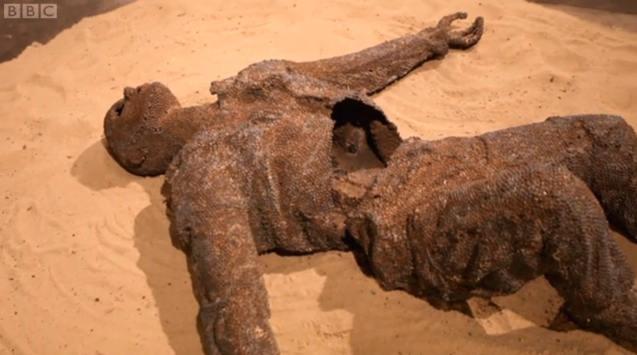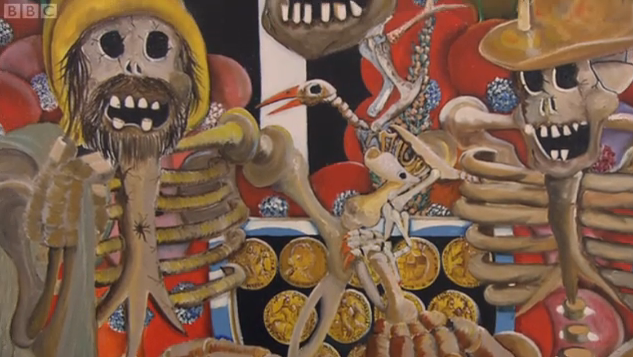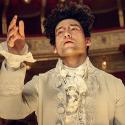Coming as it did over this Armistice weekend, when the soldiers who have died for us are foremost in our thoughts, last night's Art for Heroes: A Culture Show Special was a salutary reminder that soldier-victims are not just those who are killed or sustain terrible physical injuries but also those with psychological wounds which can't be stitched together. It went beyond, however, an exploration of Post-Traumatic Stress Disorder into how art therapy is helping some of these veterans process and express and salve their aggression and anxiety.
The programme began with footage from a century of wars: World War One, the Falklands, Vietnam, Northern Ireland, the Balkans, the first Gulf War. What the diversity of wars served to reveal was the similarity of the effect on soldiers, which was also terrifyingly represented by footage of soldiers with PTSD shaking uncontrollably. It doesn't matter whether it is the battles of the Somme or the fight for Kandahar; any soldier exposed to the stress, brutality and gore of conflict can end up like this.
Not that the government or Armed Forces recognised this for a long time. One veteran said that he left the Army in 1971 and was diagnosed as having PTSD in 2001. If you made it to your diagnosis without having sunk into alcohol or drug addiction, been sent to prison or killed yourself, that seemed some small victory, or at least a first step. Many of the veterans said that suicide had been tempting or attempted.
 A lucky few - very lucky, given the closure of military hospitals and the incipience of art therapy as a properly recognised treatment - are given art classes combined with sessions of analysis and self-reflection, often provided by the charity Combat Stress. When the veterans were reflecting, there were a few common sentiments: the art creates itself; it wakes up something inside you; and it expresses things you can't verbalise. Given that PTSD is to do with the recurrence of unprocessable memories, by reifying them (even on paper or in clay) in ways which stretch beyond what words can offer, the benefit of art therapy is clear. (Pictured above, a sculpture by an American veteran inspired by a victim of the War in Iraq.)
A lucky few - very lucky, given the closure of military hospitals and the incipience of art therapy as a properly recognised treatment - are given art classes combined with sessions of analysis and self-reflection, often provided by the charity Combat Stress. When the veterans were reflecting, there were a few common sentiments: the art creates itself; it wakes up something inside you; and it expresses things you can't verbalise. Given that PTSD is to do with the recurrence of unprocessable memories, by reifying them (even on paper or in clay) in ways which stretch beyond what words can offer, the benefit of art therapy is clear. (Pictured above, a sculpture by an American veteran inspired by a victim of the War in Iraq.)
Can - should - we comment on the quality of the art? It would be patronising not to judge their work, but equally it would be harsh to try and apply the standards of professional artists. A few observations might be more interesting. First, you might have expected a lot of the work to resemble Francis Bacon's: visceral, bloody, demolishing objects into amorphs and pulverising them into emotional expressions. Certainly there were patches of violence, plenty of grasping, clutching hands and some Mexican Day of the Dead-style carnival grotesquerie, but equally there was tenderness and detail - miniature houses, delicate sculptures, charcoal line drawings, pencil sketches, clay pieces.
It seems that even the meanest act of art is curative
Second, the veterans did not think that they had become artists like all other artists - the therapeutic value of their practice was always paramount. However, they shared the drive of all other artists who can do nothing but create, for whatever reason. Indeed, it was the necessity of the act of creating which had replaced the drive to annihilate.
A question implicit in the programme, yet reasonably ignored, was whether other forms of art can act as therapy. Why should veterans not be given keyboards to compose their pain into a musical form? Could writing poetry help? One possible answer is that it seems that even the meanest act of art is curative, no matter how simple or unstudied. Anyone can do it, whereas music requires a baseline of skill, and poetry, too.
The programme itself was not faultless. It was far too long - the subject could easily have been put into half an hour, although Tim Samuels presented sensitively throughout. There was no need to spend so long going fishing (literally) or talking to American veterans (who said the same as UK veterans) and brevity would not have diminished the effect of the war footage. The staging of the veterans' exhibition served public and private purposes, but it felt a little like something tagged on to give the film a climax when the rest stood by itself. A brief appearance by former Defence Secretary Liam Fox was a slightly eyebrow-raising moment, though he spoke with passion and conviction.
If you have not yet caught this programme, the first half-hour is certainly worth your attention: if not to understand how PTSD has ruined so many lives and art therapy helped some few, then to realise that we will soon be thinking about this for the thousands of veterans of our current and recent wars.















Add comment